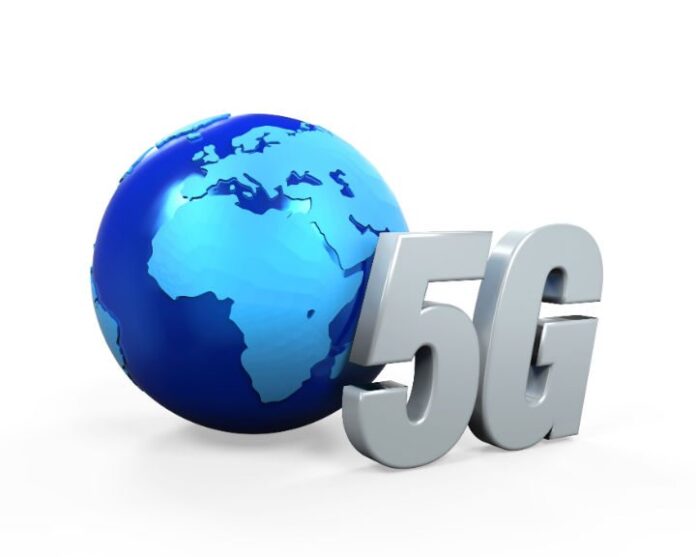XCellAir predicts continued evolution of 5G, Wi-Fi and IoT in 2016
Editor’s Note: With 2016 now upon us, RCR Wireless News has gathered predictions from leading industry analysts and executives on what they expect to see in the new year.
2015 was mixed in terms of how the telecom space evolved – consolidation and evolutionary growth in cellular; rapid expansion of Wi-Fi networks; and the continued promise of the “Internet of Things.” Here’s my look at key 2016 trends in each of these areas.
5G – good buzz, some hype and some activity in 2016
Now that “4G” LTE has settled in and become concrete (at least in some parts of the world), it’s inevitable the buzz around the “next G” picks up. What is interesting with “5G” is the extent of pre-standards research, both in academia and industry that has gone into this area. Much of the activity has been driven out of Europe, with the European Union and national governments – most notably the United Kingdom – investing billions of euros in research projects spanning several areas. Clearly, Europe is keen to wrest back its driving role in the wireless area after being largely outpaced by Asia and the United States with 4G. Efforts are underway – backed by significant investments – to take that leadership back.
My prediction is 5G will officially enter its buzz cycle in 2016 and its hype cycle in 2017, with real products and early deployments in the early 2020s. But expect the buzz in 2016 to be accompanied by activity to define what 5G will be. Indications are early-stage standards work on 5G will start in 2016 – to the extent of defining requirements and starting to evaluate potential solutions to address those requirements. Standardization is currently road mapped to be completed in two phases, with the last phase ending in 2019. These dates always slide out a fair bit, so our foresight here is it will be until 2020 or beyond before something real is deployed. But the road to reality will get paved in 2016.
The more interesting question remains: what will 5G entail? From a user perspective, 5G is going to be faster, smarter and less power-hungry mobile broadband. It means “giga” data rates with super-low transmission delays; being able to download a high-definition movie in seconds versus minutes with 4G; a hugely improved content viewing experience; faster smartphones; and a variety of longer-lasting wearable devices. All delivered seamlessly while on the move – whether you’re commuting, traveling or stationary. From a network perspective, 5G aims to deliver a much more cost-efficient, scalable network with functionality migrating into the cloud; a framework that accelerates innovation and allows operators to introduce new services rapidly. But what 5G is going to be – the fledgling definition of the “how” – will get mapped out starting in 2016.
Wi-Fi continues to fly
While 2016 will be an evolutionary year for cellular, Wi-Fi will continue to experience the kind of surge it has seen in the last couple of years. Service providers, notably cable companies and Internet service providers, will continue to aggressively expand their Wi-Fi footprint, not just with a view to customer retention, but with a goal of attracting new subscribers and expanding revenue through service offerings.
A prime example of this is the “Wi-Fi first” approach being taken by many providers who are offering services, including voice, video, security and surveillance, over Wi-Fi with a vastly expanded footprint. Of course, coverage can be a question mark with Wi-Fi. Some providers are choosing to fill in coverage gaps using cellular mobile virtual network operator relationships, while others are putting up Wi-Fi wherever they can – street lamps, hot spots, public facilities – to provide a widespread blanket. This build-out trend will continue at a frenetic pace through 2016.
The phenomenon of community Wi-Fi, leveraging residential Wi-Fi to provide outdoor coverage to roaming users, will also continue to pick up in 2016. Simplistically speaking, the idea here is to partition a residential Wi-Fi router into a private and a public network and to enable “outsiders” access to the public-facing bandwidth on the router. The likes of Comcast and Cablevision in the U.S. and BT in the U.K. have trialed and deployed this extensively. 2016 will see other service providers jump in and deploy community Wi-Fi to provide a wider coverage net to their subscribers.
With the rapid and ad-hoc nature of community Wi-Fi, the sheer size of the network has become a challenge and densification creates further complexity. Add in the requirement to support high-quality, monetizable services, and it’s easy to see that operating a Wi-Fi network won’t remain the hands-free, unmanaged proposition that it is today. Running a Wi-Fi network at scale will require network intelligence. This means the ability to discover and locate devices as they enter the network. It implies self-provisioning schemes, automated fault management mechanisms and self-organizing schemes to mitigate interference in dense deployment areas.
IoT – continuing hype mixed in with good doses of reality
The subject of IoT has created so much hype over the last few years that a lot of non-techies are familiar with the term. While IoT has been touted as this all-consuming Internet of everything (every device, every appliance connected via the Internet to just about anything), in reality it has been developing in silos. Many vertical segments exist – smart home, energy, automotive, security, industrial, healthcare and many more. Sensor-based devices have evolved in many of these fields to collect data from their environments and present them to central entities for monitoring and control. It’s virtually impossible to get your arms around everything in this space, or even a significant part of it.
While the hype around IoT will get frenzied in 2016, progress will be made. Not in the form of overarching solutions that cater to every problem imaginable, but in the form of devices and services that cater to specific verticals. I think you will start to see IoT making forays into the home appliance space. The likes of GE, Samsung and LG are already selling home appliances (e.g. fridges, cooking ranges, dishwashers, etc.) equipped with Wi-Fi (yes, Wi-Fi again) enabling remote control and monitoring. With concerns around public safety building up, security and surveillance systems will experience a surge as well.
A lot of work has been done in the standardization area to drive the development of horizontal platforms that can provide common service capabilities to IoT applications – things like security, billing, location management and others, that otherwise have to be redeveloped by each application or service. I do not see 2016 as being the surge year for horizontal standards – I see traction for standards like OneM2M happening more in the 2017 to 2018 timeframe.
Big data and data analytics will become key here. Pretty soon the likes of Google will not just be aware of what content we are looking at and what we are buying, but will also be cognizant of what we eat on a regular basis, how much time we spend in the shower, how often we cook versus go out to eat and other potentially scary details. Startups developing data analytics solutions will do well to align with the IoT bandwagon as exit opportunities are likely to abound in the next couple of years.
So whether it is 5G progress, Wi-Fi expansion or IoT, at the heart of it all is increased demand for high-quality wireless connectivity. The velocity of demand and subsequent innovation seems to increase year over year, and I see 2016 as yet another big step forward.
Narayan Menon is CTO, EVP of engineering and founder of XCellAir. Menon develops and evangelizes the technology strategy and roadmap, and leads product development. Prior to XCellAir, Menon drove research and development for InterDigital, leading elite teams to innovate and implement next-generation wireless solutions – including the inception and early development of the XCellAir product. Menon has more than 25 years of experience in the wireless field, holding leadership roles at Siemens Mobile Networks, Omnipoint Technologies and Hughes Network Systems in the development of TDMA, GSM/GPRS and 3G systems. Menon holds Engineering degrees from the Indian Institute of Technology, New Delhi and an Executive MBA from Hofstra University.


